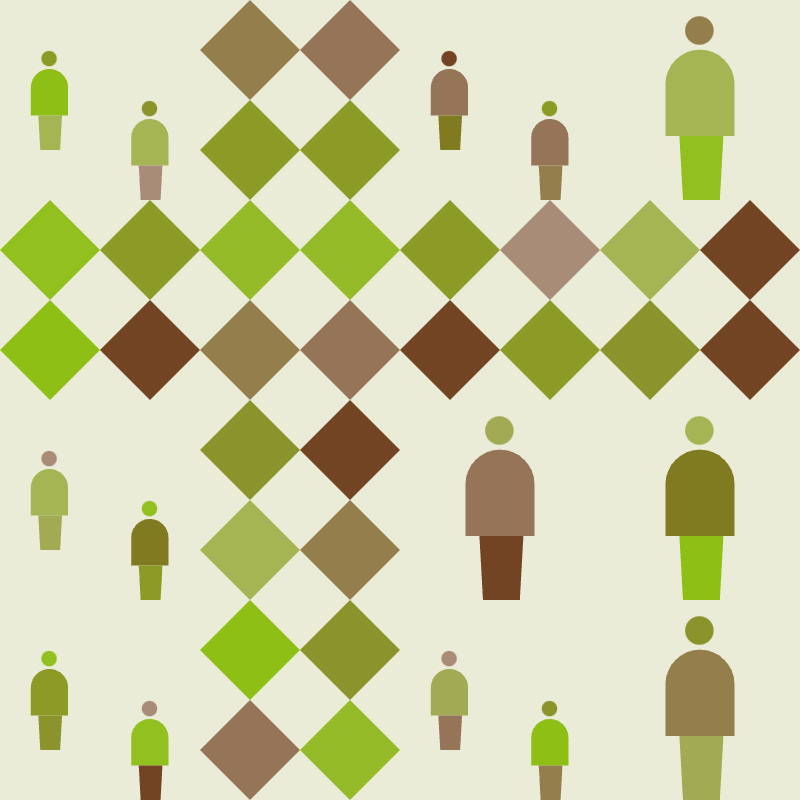Geometric patterns have long been a fundamental element of design, offering structure, balance, and aesthetic appeal. In user experience (UX) design, these patterns can be strategically utilized to create engaging and visually harmonious interfaces.
The Role of Geometric Patterns in UX Design
Geometric patterns are not just decorative elements; they play a significant role in guiding users, improving readability, and enhancing brand identity. Here are some key ways geometric patterns contribute to UX design:
1. Visual Hierarchy and Navigation
Patterns can help establish a clear visual hierarchy, making it easier for users to navigate interfaces. Repeating elements like grids, stripes, or modular layouts can direct users attention to key sections, such as call-to-action buttons and important information. Well-structured patterns provide a sense of order, making the overall design feel more intuitive.
A good example is the use of a grid system, which helps to align elements proportionally. This method is particularly effective in dashboards and complex interfaces where clarity is crucial.
2. Enhancing Readability and Clarity
Geometric shapes like rectangles and circles can frame content in a structured way, reducing cognitive load and improving readability. Using subtle backgrounds with geometric designs can also create contrast without overwhelming users.
For instance, diagonal lines or soft overlays can subtly divide sections, making content easier to scan. This technique is widely used in mobile applications to create a natural separation between different sections while maintaining aesthetic appeal.
3. Creating Brand Identity
Many brands integrate unique geometric patterns in their UI to strengthen identity. Custom patterns can reinforce a brands character and create a consistent look across digital platforms.
Patterns can also be used in branding elements, such as logos, backgrounds, and iconography, to create a visually cohesive experience. When used consistently across web and mobile applications, geometric patterns help users associate a particular design language with the brand, increasing recognition and trust.
4. Improving User Engagement
Dynamic geometric designs, such as animated patterns or interactive elements, can enhance user engagement by making the interface feel more lively and intuitive. Micro-interactions using geometric shapessuch as hover effects, loading animations, or scroll-based transitionscan guide users and provide instant feedback.
A great example of this is the use of interactive grid layouts in e-commerce platforms, where users can explore products dynamically by hovering or clicking on patterned elements that expand or reveal additional details.
5. Responsive and Adaptive Design
Patterns can be used effectively in responsive web design to ensure consistency across different screen sizes. Grid-based layouts, for example, help maintain alignment and proportion on various devices.
With modern web design moving toward mobile-first approaches, geometric patterns serve as a bridge to create seamless transitions between different screen sizes. This ensures a balanced and proportional layout, whether viewed on desktops, tablets, or smartphones.
Best Practices for Using Geometric Patterns in UX
- Keep It Subtle: Avoid overloading designs with complex patterns that may distract users. Minimalism combined with well-placed patterns can create a visually appealing yet functional experience.
- Use Patterns for Functionality: Utilize patterns to guide users, highlight actions, and improve usability. For example, diagonal patterns leading toward a call-to-action can subconsciously direct users attention.
- Maintain Consistency: Ensure that geometric patterns align with your brands visual language and typography. Inconsistent pattern usage can confuse users and reduce the effectiveness of the design.
- Test for Accessibility: Make sure that patterns do not reduce readability for users with visual impairments. Contrast ratios, spacing, and background patterns should be optimized for different vision capabilities.
- Experiment with Animation: Consider subtle animations to enhance engagement without overwhelming users. Geometric transitions, parallax effects, or simple hover animations can add interactivity without compromising usability.
Conclusion
Geometric patterns are a powerful tool in UX design, offering both aesthetic and functional benefits. When used strategically, they enhance navigation, engagement, and brand consistency. By incorporating patterns thoughtfully, designers can create visually appealing and user-friendly digital experiences.
From guiding users eyes to improving readability and engagement, geometric patterns hold the potential to transform digital interfaces into something more structured, elegant, and intuitive. As UX continues to evolve, embracing these patterns can lead to more innovative and memorable designs.
Are you looking for ready-to-use geometric patterns? Explore our extensive pattern library to find unique designs for your next UX project!
